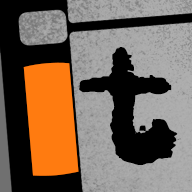Hi,
I`m the assistant editor on a local indie feature, shooting in a few weeks. I`ve been reading over the script and the writer for some reason has decided to use letters in his/her scene heading markings on certain pages. Scene 1A, 1B, 2, 3, followed by 3A, etc.
For labeling clips, I like to use, 1A/1, 1B/2. To indicate the scene, the current set up, and lastly, the take.
Does anyone have any experience labeling clips if the scene heading markings have letters in them? Seems like it could become a bit messy in post.
I`m the assistant editor on a local indie feature, shooting in a few weeks. I`ve been reading over the script and the writer for some reason has decided to use letters in his/her scene heading markings on certain pages. Scene 1A, 1B, 2, 3, followed by 3A, etc.
For labeling clips, I like to use, 1A/1, 1B/2. To indicate the scene, the current set up, and lastly, the take.
Does anyone have any experience labeling clips if the scene heading markings have letters in them? Seems like it could become a bit messy in post.


